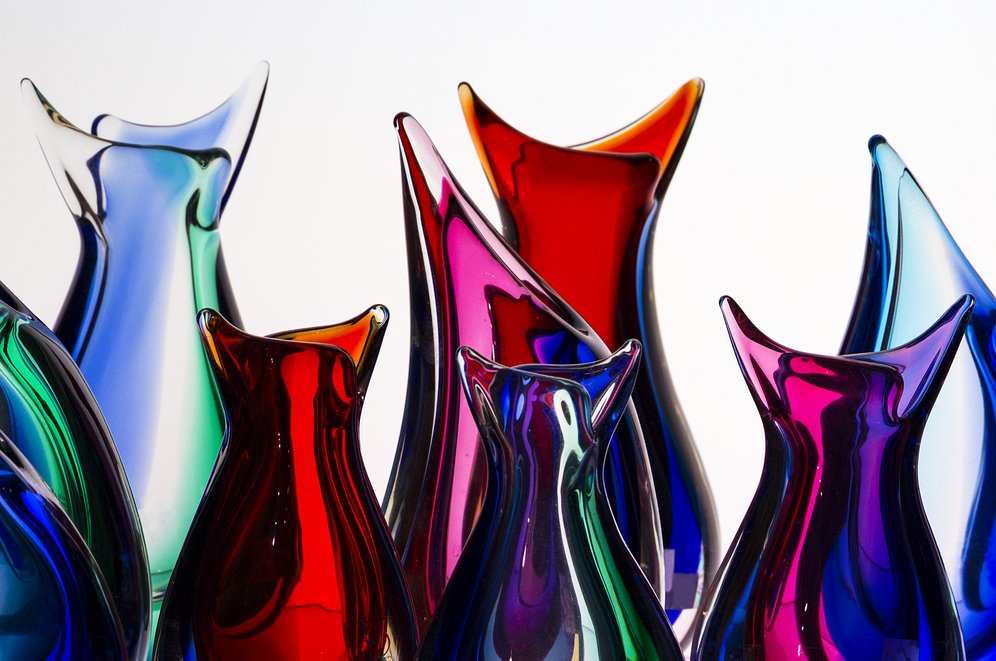The production of glass for artistic purposes combines technological knowledge with the ideas of the artist. Therefore, in this article we will look at the key historical points related to the production of this material, as well as current trends in art glassmaking. You can find out more at virtual cultural events LEVEL https://different-level.com/ – experts will tell you really useful and interesting information on the topic of art glass.
Today glass artisans work in various techniques:
- blowing;
- shaping in a kiln;
- foiling;
- coloring;
- sandblasting;
- engraving;
- glazing;
- satinizing;
- gluing;
- overshot;
- cutting;
- cameo;
- surface decoration.
The most famous objects of glass art

This category of art has many offshoots. Let’s list the well-known and original directions.
Stained glass
Stained glass 一 a decorative element of colored glass on windows. Ornamental and plot patterns complemented the mystical atmosphere of a cathedral or chapel, the colors used had symbolic meaning. European masters most developed stained glass art during the Middle Ages, Renaissance, and further in the 19th and 20th centuries.
Crystal
Handmade crystal tableware and miniatures are considered works of art if made by famous craftsmen or factories. The pattern, usually regular, geometric and repetitive, is done to emphasize the brilliance and refractive properties of the crystal.
Venetian (Murano) glass
Famous glassware 一 mirrors, jewelry, tableware, figurines, chandeliers 一 were produced in antiquity and are still produced by Venetian craftsmen from the island of Murano. The objects have unique processing, coloring and decoration.
Art cut
Designer crystal cutting was done by renowned craftsmen such as Keith Murray for Steven & Williams and Clyne Farquharson for John Walsh Walsh.
Vitreography
Volumetric paintings on glass are performed by few artists due to the complexity of the process. A well-known representative of the genre is Jean-Pierre Veil. The painting depicts three-dimensional scenes displayed in a shadow block frame. Each element is isolated and painted on separate suspended panels of glass. The motionless images seem to come into motion when the viewer changes the angle of perception.
A brief history of the emergence of glass

In the Stone Age, obsidian (volcanic glass) was used to make sharp cutting tools that were widely traded around the world.
Humans first made glass about 3,600 years ago in Mesopotamia, Syria, or Egypt. In Greece during the Hellenistic period (323 BC – 30 BC), glassmaking focused on large objects such as tableware. Millefiori is a special “thousand colors” technique originating in those times, involving the manufacture of glass rods heated in a furnace and stretched to a thin state. The combination of rods, cut in cross-section, yields a unique pattern.
In India, the technology of glass production developed from 1730 B.C. These were bracelets, beads, miniature vessels, and tiles. The craft was improved after contact with the Greco-Roman world: new methods of decoration, molding, glass coloring were added.
Anglo-Saxon glass (V-VI century) was found by archaeologists in settlements and burial sites: these were beads, windows, vessels, and elements of jewelry.
Technological breakthroughs in glass production
The modern art of glass would not be possible without the historic discoveries of the past by experimental glassmakers.
- 1674 – George Ravenscroft discovered the technology to make glassware from clear lead crystal on an industrial scale. The addition of lead oxide improved the appearance of the material and made melting easier.
- 1688 – Frenchmen Tewar and de Neu improved the process of casting polished sheet glass. The craftsmen poured and rolled molten glass over an iron table, producing large plates, which was previously impossible.
- 1847 – James Hartley discovered the rolled plate method, which gave a ribbed surface finish. This method gave railroad stations large glass roofs.
- 1843 – Bessemer’s first attempts to create “float glass” by pouring glass over liquid tin.
- 1848 – Engineer Henry Bessemer patented an automatic continuous ribbon of flat glass that was formed by roller guides.
- 1851 – Joseph Paxton built the Crystal Palace, the first building to use glass as a building material.
- 1888 – A new method of machine rolling patterned glass introduced by Chance Brothers.
- 1898 – Pilkington invented Wired Cast safety glass with steel wire mesh.
- 1953-1957 – the revolutionary development of float glass, owned by Alastair Pilkington and Kenneth Bickerstaff, is used to this day to form window panes, flat screens and other products. The essence of the method: a carefully calibrated amount of glass is fed into a bath of molten tin, flattened under its own weight, flows under the influence of gravity and turns into a continuous glass ribbon.
In this way, the complex glass material has found its place in our daily lives. But glass also pleases our eyes as a valuable work of art if it passes through the hands of an artistically gifted person.










